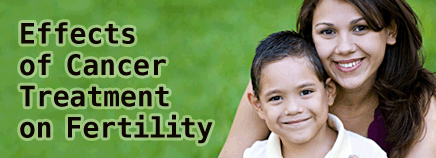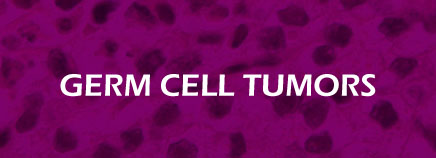When your child has cancer, it can be hard to think beyond the next few days or months. Yet because today’s treatments are increasingly effective — the majority of children with childhood cancers survive, thanks to medical breakthroughs — it’s important to understand how they could affect your child’s fertility. …
Ewing Sarcoma
Ewing sarcoma is a cancerous tumor that grows in bones or soft tissue near bones. It can develop anywhere in the body, but most commonly affects the arms, legs, ribs, spinal column, and pelvis. Treatment for Ewing sarcoma involves a combination of chemotherapy, surgery, and/or radiation. With early diagnosis and …
Germ Cell Tumors
Germ cells are the cells in a developing fetus that eventually produce sperm in males and eggs in females. These cells normally develop along what’s called the “midline” of a fetus (usually where the stomach and other internal organs will lie) before finally settling into place in the reproductive organs. …
Hodgkin Lymphoma
Hodgkin lymphoma is a type of cancer that affects the lymphatic system. This highly sophisticated filtering system helps the body’s immune system remove bacteria, viruses, and other unwanted substances. The lymphatic system includes the lymph nodes (glands), thymus, spleen, tonsils, adenoids, and bone marrow, as well as the channels (called …
Juvenile Myelomonocytic Leukemia (JMML)
About Leukemia Leukemia is a type of cancer that affects the body’s white blood cells (WBCs). Normally, WBCs help fight infection and protect the body against disease. But in leukemia, WBCs turn cancerous and multiply when they shouldn’t, resulting in too many abnormal WBCs. These cells then interfere with the …
Leukemia
About Leukemia The term leukemia refers to cancers of the white blood cells (also called leukocytes or WBCs). When someone has leukemia, large numbers of abnormal white blood cells are produced in the bone marrow. These abnormal white cells crowd the bone marrow and flood the bloodstream, but they cannot …
Liver Tumors
The liver is the body’s largest solid organ. Lying next to the stomach on the right side of the abdomen, it has many jobs — like cleansing the blood of toxins, producing bile (which helps break down food during digestion), and storing energy in the form of a sugar called …
Lymphoma
The body’s lymphatic system helps the immune system filter out bacteria, viruses, and other unwanted or harmful substances. The lymphatic system includes: the lymph nodes (also called lymph glands) thymus spleen tonsils adenoids bone marrow Channels — called lymphatics or lymph vessels — connect the parts of the lymphatic system. Lymphoma is a type of …
Melanoma
Although there are several different types of skin cancer, most don’t become life-threatening because they aren’t likely to spread to other parts of the body. Unfortunately, melanoma is different. If not caught early, melanoma can spread from the skin to other organs — often with deadly results. And this serious …
Neuroblastoma
Most people have never heard of neuroblastoma, but it’s actually the most common type of cancer in infants. In this rare disease, a solid tumor (a lump or mass caused by uncontrolled or abnormal cell growth) is formed by special nerve cells called neuroblasts. Normally, these immature cells grow into …










